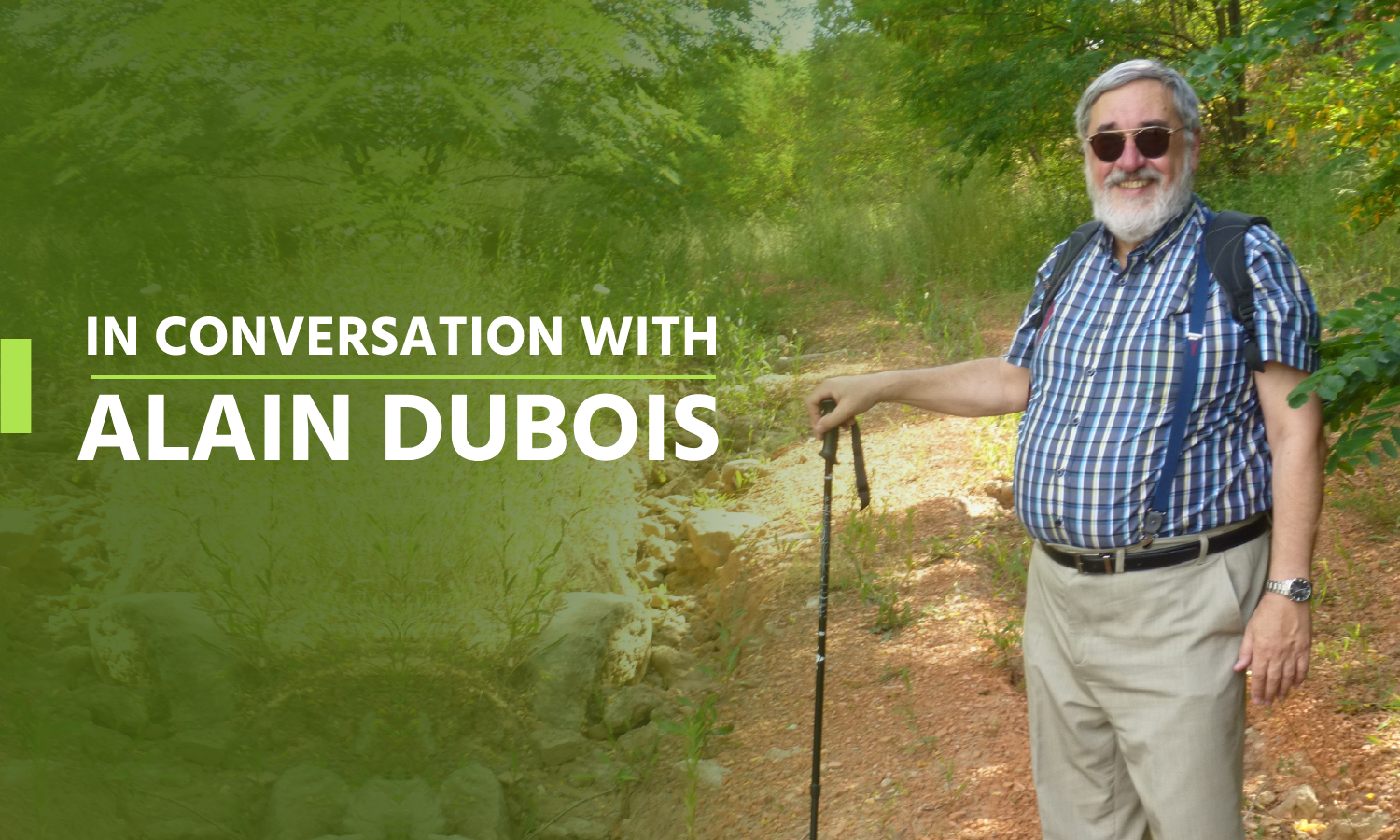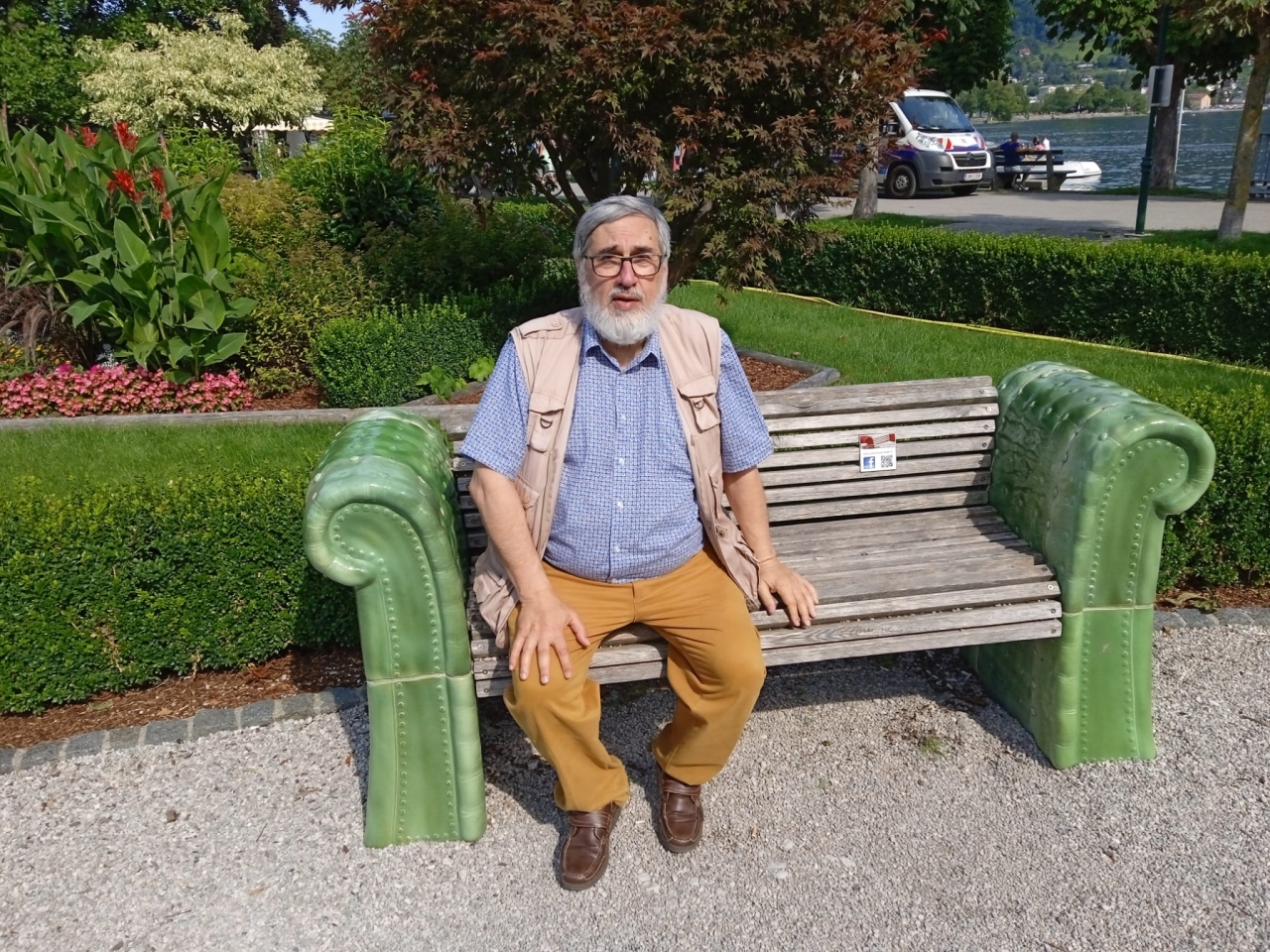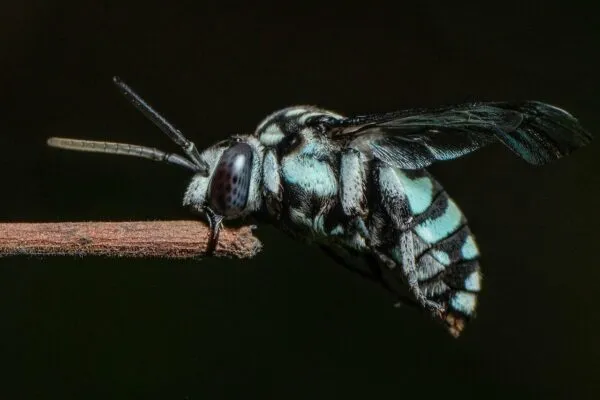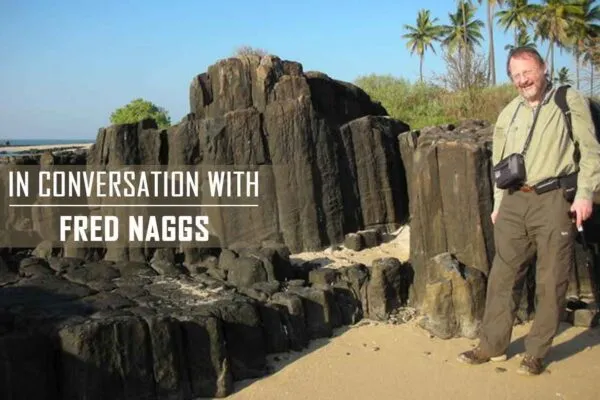In Conversation with French Batrachologist Alain Dubois on Biodiversity
Delve deep into the life of amphibians and science of taxonomy
Humankind has wreaked havoc on almost every aspect of the environment, be it air, water, land, flora, and fauna. This encroaching approach has put numerous wildlife species in jeopardy. Many people fail to understand that to save the planet from impending doom, it is essential to protect every species – small or big – to maintain the ecological equilibrium. While there are many conservation efforts focused on big, endangered mammal species, tiny organisms such as invertebrates and amphibians get rarely any attention and yet they play a huge part in the health of the ecosystem.
Nevertheless, there are people working to enlighten the world about the significant role that amphibian species such as frogs play in maintaining ecological balance. We were fortunate enough to get into a conversation with the French Batrachologist Alain Dubois, Professor at the Natural History Museum, Paris, who has spent most of his life studying amphibians and classifying them to help better understand them.

He gives us a profound insight into his work and how the smallest species are as essential as the behemoth ones. Let’s dive into our insightful conversation.
Planet Custodian (PC): What inspired you to pursue herpetology? How and when did you decide to delve deep into the science of taxonomy?
Alain Dubois (AD): My first contact with the amphibians was when I was a child, 13-14 years old, in the garden of my grandfather, and through reading books. So I had both sources of inspiration for studying animals, the animals themselves and also what scientists say about them. When I was still in high school, I contacted a very famous scientist in France, and he told me I should start working, and doing research, even if it was not yet in university. So I made my first work with him when I was 14-15 years old.
Then I joined the university, and I went to Nepal from Paris by hitchhiking. I was the first one who devoted a detailed study of the amphibians of Nepal. So I made my Ph.D. in the amphibians of Nepal. It was the first comprehensive work in this country. And with this work, I was hired by the Paris Museum, where I soon became a professor.
Amphibians are one of the most fascinating zoological groups, for several reasons. First, many of their species have a “double life” (this is the meaning of the term “amphibios” in Greek), starting with an aquatic larva (such as the tadpoles of frogs and toads) followed by a terrestrial adult. But other modes of development are also present in this group, such as direct development within the egg hidden in the soil, giving directly a small frog, ovoviviparity (direct development within the egg but in the female, or even viviparity (like in mammals, the embryo being fed by the mother). Furthermore, they show a multitude of modes of life that makes their study an endless source of discovery and fascination.
But these small vertebrates, that have contemporaneous with the dinosaurs, are particularly sensitive to the numerous aggressions to the environment caused by mankind, such as destruction of their habitat (draining of wetlands and ponds, cutting of forests), pollution of water, ground, and air, collecting for food or as pets, global warming, etc., so that in the eighties they were the first group of vertebrates that called the attention of biologists as being endangered.
Today, a high proportion of their species are highly threatened with extinction, although a large proportion of these species are still unknown to science. As you certainly know, this problem is a more general one, as there are on this planet 10 million species which are going to be extinct at the end of this century.
PC: Shine some light on the significance of taxonomy and how does it help in saving the species?
AD: During my career, I studied batrachology (the branch of herpetology that is devoted to amphibians), mostly the classification (taxonomy) of these animals, but also other practical and theoretical aspects of the science of biology, and not only taxonomy. I did most of my work on taxonomy because I think it’s a crucial discipline for biology, for comparative biology, especially in our times of the destruction of the biosphere by mankind (our century deserving the name of ‘century of extinctions’).
The purpose of the taxonomy is not to ‘save the species’ but to discover, study, describe and name them, and to classify them, according to their phylogenetic relationships (kinship relationships), in larger groups (genera, families, orders, classes, etc.). The result of this work can be of crucial importance for conservation biology (how could we protect, what we do not know?), but it is not the work of taxonomy and it should not be the central concern of taxonomists.

It is that of citizens and of society as a whole: if we do not change our relationships with nature, if we do not stop destroying the environment, we will not save the species. This question is a political, not scientific one.
PC: What is the most fascinating species you have studied, tell us more about it.
AD: This is the kind of question we are always asked, but my first reply is that all species are fascinating. Each species is unique, and each extinction, be it of a giant whale or of a tiny earthworm, is an irreversible loss without consolation, just like the destruction of a cathedral or an artistic masterpiece.
What fascinates me is the mere existence of species, these groups of individuals that behave and function separately from the others and that perpetuate themselves through generation, keeping their own characteristics. When you see a cat in New Delhi or in Paris, they have the same behavior. And if you see a dog, it’s different, even if they are very different dogs, they behave like dogs and not like cats.
I have been one of the few specialists in the Himalayan region amphibians in the 70s, now many people study them. When you know a group well, you see it looks like this one that I already know from the first minute when you’re in front of a new species, but it’s different in something. Sometimes you don’t know and will have to look carefully to discover. Maybe it’s just the way of moving that is different or small details, not necessarily highly visible features.
Today we don’t have the same concept of species as two centuries ago because we know that species evolve, that species are not completely isolated from each other, and that they have been hybridizations and gene transfers between species so that species are not ‘closed boxes’. But anyway, there is something that can be summarized in saying that any species is unique and should be respected for that.
To come back to your question, perhaps the most fascinating frog species that I know is the gastric brooding frog. This frog used to live in the northeast of Australia. It long remained unnoticed, because it lived in a habitat (swift running stream) where Australian batrachologists did not think that frogs could live until one of them (David Liem) looked for frogs in this unusual habitat and discovered it. This frog lived entirely in the water and never went out.
A few years later, another biologist (Mike Tyler) captured one and observed it was a female with a big belly. He thought she must be full of eggs, she will lay eggs that would develop as tadpoles if there is a male to fertilize them. He brought it back and put it alone in an aquarium and went to bed. In the morning he came back and in the aquarium, there was this big frog but also 20 very tiny frogs – tiny frogs not tadpoles. He wondered how it was possible as no frog was known to give birth like that.
So he studied it and found that the female lives in the river, meets the male who fertilizes the eggs she lays and then the female swallows the eggs. The eggs go into the stomach and then the stomach stop being a stomach: it does not digest the eggs. They develop entirely inside the stomach and when they have reached a good size they send a signal to the mother and she vomits them in the river. This is the only animal species in the world having this mode of development. This story is particularly fascinating, but the amphibians have many other such stories to tell us.
PC: What are your views on the taxonomic impediment, and how scientific community can resolve the issue?
AD: In my opinion, the taxonomic impediment is the result of bad decisions of our societies regarding the priorities of research on biodiversity. The main factor of it is the terrible shortage of brains and arms devoted to the taxonomic study of biodiversity, i.e. of permanent positions for researchers. This problem will not be solved by purely technical solutions, such as the molecular study of the species we already know or computer analysis of “big data”.
The unknown biodiversity of our planet is not in the sequencers and computers of our big cities, but in the forests, savannas, ponds, lakes, and sea of our planet, and to discover it scientists must go there and collect them, without being barred from doing this by stupid laws and regulations: no species has turned extinct as a result of collection by scientists, but many were so as a consequence of industrial, agricultural, urban planning, transports or commercial activities.
To reduce significantly our gigantic ignorance about the biodiversity f our planet, we would need thousands of field naturalists to explore the tropical forests, the islands, and the mountains of our planet, collecting them, and storing them in ethanol and in liquid nitrogen. Even if we cannot study all of these specimens now, it will allow us to study them later, but if we leave them getting extinct without collecting specimens the information they could provide us about the biodiversity of our planet will be lost forever.
PC: Rapidly changing climate is affecting every living being. How reptilian and amphibian species are bearing the brunt of the phenomenon?
AD: Climate change is not the key factor in the extinction of amphibians and reptiles. The main factor is by far the destruction or major transformation of the ecosystems and habitats where they live, such as deforestation, draining of marshes, ponds, and lakes, pollution, etc. (which in my opinion, for these groups, may be responsible for 50‒70 % of extinctions).
Then come direct exploitation of species and their displacement all around the planet, with its consequences (including the spreading of invasive species), then climate change, pollution, and other nuisances. The focus on climate change for biodiversity is mostly a ‘fashion’, which did not exist 20 years ago. Climate change is affecting the oceans, the glaciers, the forests, the hydrology, etc., and of course, this has an impact on living species but, even without it, the extinctions would be gigantic, as a result of our agricultural, industrial, habitat, transport and other practices.
PC: Which species, in particular, are the most affected? What can be done to protect them?
AD: There is no general law in this respect. Of course, stenoeceous species (with narrow ecological variance) are more vulnerable than euryceous ones, but the latter also can be affected. Their protection would require changing our practices, so it is a matter of societal choice, not science.
PC: There’s been a taxonomic bias in the conservation community, primarily focusing on mammal and avian species. Your thoughts on this partiality?
AD: This ‘anthropocentric’ approach to conservation biology shows that this ‘scientific discipline’ has more to do with advertisement and social entertainment than with science. It is part of the ‘showbiz society’ (‘Société du Spectacle’) of Guy Debord (1967). Mammals and birds represent probably less than 1 % or even 0.1 % of the earth’s biodiversity, so what about the rest?
The IUCN ‘Red Lists’ are rather well documented for vertebrates, but their coverage of ‘invertebrates’ is dramatically incomplete and unsatisfactory. Furthermore, even for mammals and birds, the impact of this discipline to really protect species has been very weak. But this discipline is highly ranked by the institutions and people who govern science, so engaging in it is a source of funding and positions, which is certainly not the case for the modest work of taxonomists.

PC: Mass extinctions have been happening for as long as science could assess. But recent such occurrences have been more intense and frequent. Do you think species can evolve and adapt to survive climate change-triggered mass extinctions?
AD: There is no general reply here as well, and each case would require a study to know more about it. The mass extinction that is ongoing is one of the most severe that our planet has seen since it exists, and by far the largest since mankind exists.
The terms ‘adapt’ and ‘evolve’ are not synonymous. Adaptation is an individual process. In front of aggression, some individuals may adapt quicker than others. This is because the ‘genetic equipment’ of their species is rather wide, which is often the case for species having a large distribution, and they can use some features of this ‘equipment’ to survive. Others, who have small-sized populations with small distributions and small genetic variability, will not have this possibility and will go extinct.
In contrast, evolution is a large-scale process. It does not involve only using the potentialities offered by the existing gene pool but requires the creation of novel genetic material. Even if in some cases this process can be quick, it usually requires long periods of time and will not be possible, given the brutality of the environmental changes we are currently facing. Anyway, when a forest or a pond disappears altogether, all its living populations disappear, and if these populations are the only ones of a species that exist, the species turn extinct immediately and definitively.
PC: Scientists are working on various de-extinction projects. Don’t you think our primary focus should be on saving the existing species rather than reviving the extinct ones?
AD: The ‘de-extinction’ project is a (bad) joke, and should certainly not be backed and advertised. It could be called the ‘Jurassic Park Syndrom’ and is iconic of the ‘showbiz society’. It will have no effect on extinctions, not only because of its gigantic technical difficulties but because, even if it could work for a few ‘famous’ species like the mammoth (which is highly unlikely), this would concern only a few species among the millions that are currently turning extinct.
For most of these species, as very few works are currently devoted to the collection and storing of specimens in liquid nitrogen or other techniques, no biological material would be available to even consider doing it. But the most important problem with this approach is that it sends a very wrong message to society and science: if scientists were able to ‘resurrect’ cryogenized species, there would be no need to protect the biodiversity as it is now.
This wrong message is the same, in worse, as that which consists in making ‘re-introduction’ of species in habitats where they have disappeared, without having improved the conditions of their survival. Even the practice of ‘national parks’ sends the message: here we are saving biodiversity, so you can do whatever you want outside.
What would be needed would be a drastic change in mankind’s habits, behaviors, and practices, allowing us to live in harmony with the rest of the biodiversity. But such (very unlikely) changes could come only from society and citizens, from politics in fact, not from science.


